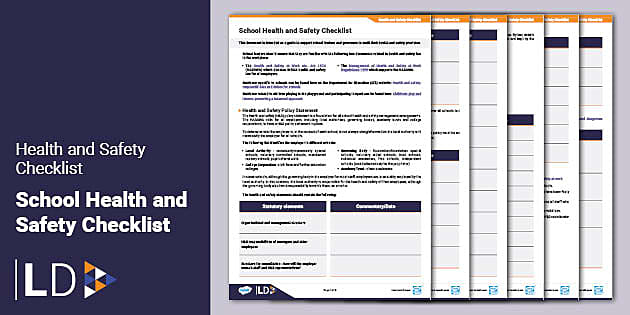
A healthy diet for children includes fruits and vegetables. Vegetables and fruits are excellent sources of iron, vitamin D, B12 and vitamin D. Many eggs contain omega-3 fatty acids which can help kids' brain development. A cup of fruit contains about a dozen or so calories, and most fruits are cut into small pieces. Fruit can be served fresh or dried with peanut butter.
Juice should be served in moderation - one or two servings per day if you want to keep your child's sugar intake under control. You should not just sprinkle juice all over your child's food. Instead, give them a bowl full of fruit. It will provide fiber and other healthy nutrients for their diet. They may drink too many juices between meals which could be dangerous for their health. Sodium is needed to maintain body fluid levels and maintain nerve and muscle function, but too much sodium increases the risk of heart disease and high blood pressure. High sodium content is common in processed foods.

A new study has shown that 60 percent are unfit for children. In a survey of 156 products, the researchers found that more than half of them contained added sugar, 15.4% had saturated fat and seven percent had salt. The researchers also examined the labels that companies use to label their "healthier foods" and the ingredients they contain. The study revealed that these foods were processed in a way that did not list the ingredients. Moreover, they often lacked the essential vitamins and minerals that children need to grow up to be healthy and strong.
Parents should be aware of the health risks associated with sugary and processed foods. To avoid this problem, parents should focus on overall diet and provide whole foods. Focus on healthy foods and stay away from processed foods. Instead, they should encourage their children to eat foods rich in vitamins and minerals. This will encourage them to eat healthy foods in the future. There are many ways to get your child to eat more fruits and vegetables. Help your child set a good example by giving them a healthy lifestyle.
It is important to provide children with a varied diet of fruits and vegetables, and limit their juice intake. Each meal should contain at minimum one serving of each. The recommended fruit and vegetable consumption for children ranges from one cup a day for a toddler to three cups a day for a 14-year-old boy. Omega-3 fatty oil fish and flaxseed is a good source of healthy fats for children. Some fruits and vegetables have high amounts of fiber and antioxidants.

Milk is a great source of vitamin D and calcium, which helps to build strong bones. It also contains 8g of protein. The minimum age for children to be allowed to consume dairy products is two years. Children shouldn't consume more than 8 ounces of milk from cows per day. When they turn 18, it is okay to switch to low-fat milk. Although yogurt and cheese are not healthy, they can still be great sources of vitamin D and calcium.
FAQ
What is the best food for me?
Your age, gender, body type, and lifestyle choices will all impact the best diet. You also need to consider how much energy you expend during exercise, whether you prefer low-calorie foods, and if you enjoy eating fruits and vegetables.
Intermittent fasting is a good option if you're trying to lose weight. Intermittent fasting allows you to consume only certain meals per day, instead of eating three large meals. This may be a better option than traditional diets with daily calorie counts.
Intermittent fasting is believed to increase insulin sensitivity. It may also reduce inflammation. This may lead to a decrease in diabetes risk and blood sugar levels. Some research also suggests that intermittent fasting might promote fat loss, and improve overall body composition.
What is the difference in a virus and bacteria?
A virus, a microscopic organism, is incapable of reproducing outside its host cell. A bacterium, a single-celled organism, reproduces by splitting into two. Viruses can be as small as 20 nanometers, while bacteria can grow up to 1 micron.
Viruses spread easily through contact with infected bodily tissues, such as saliva and urine, semen, vaginal secretions or pus. Bacteria is usually spread directly from surfaces or objects contaminated with bacteria.
Viruses may enter the body through cuts, scrapes. bites, or any other break in the skin. They can also enter the body through the mouth, nose, eyes and ears, vaginal, rectum or anus.
Bacteria can enter our bodies through wounds, cuts, scrapes, burns, insect stings, or other breaks in our skin. They may also be introduced into our bodies through food and water as well as soil, dirt, dust, and animals.
Viruses and bacteria both cause illness. Viruses cannot multiply in their host cells. They infect only living cells, causing illness.
Bacteria can spread within the host and cause illness. They can also invade other parts of your body. We need antibiotics to get rid of them.
What are the 10 most delicious foods?
These are the top 10 foods to eat.
-
Avocados
-
Berries
-
Broccoli
-
Cauliflower
-
Eggs
-
Fish
-
Grains
-
Nuts
-
Oats
-
Salmon
What are the 7 best tips to lead a healthy, happy life?
-
Eat right
-
Exercise regularly
-
Sleep well
-
Get plenty of water.
-
Get adequate rest
-
Be happy
-
Smile often
Statistics
- WHO recommends consuming less than 5% of total energy intake for additional health benefits. (who.int)
- In both adults and children, the intake of free sugars should be reduced to less than 10% of total energy intake. (who.int)
- According to the 2020 Dietary Guidelines for Americans, a balanced diet high in fruits and vegetables, lean protein, low-fat dairy and whole grains is needed for optimal energy. (mayoclinichealthsystem.org)
- This article received 11 testimonials and 86% of readers who voted found it helpful, earning it our reader-approved status. (wikihow.com)
External Links
How To
How to Live a Healthful Lifestyle
A healthy lifestyle is one where you are able to maintain your weight, your health and your fitness level. Healthy living is a lifestyle that involves eating healthy, exercising regularly and avoiding drugs, alcohol, nicotine, and tobacco. Being healthy will make you feel more confident and fit. Healthy lifestyles can also reduce the risk of chronic diseases, such as stroke, heart disease, diabetes, cancer, osteoporosis and arthritis.
The primary goal of this project was provide a step to help people live a healthier lifestyle. The introduction is the first part of this project. This explains why healthy living should be encouraged and who it should help. Then, I wrote the body paragraphs, which consist of different tips on how to keep a healthy lifestyle. I then wrote the conclusion. This summarises the article and provides additional resources if desired.
This assignment helped me learn how to write a clear and concise paragraph. I learned how my ideas could be organized into topic sentences. Moreover, I improved my research skills because I had to find specific sources and cite them properly. I also learned how to write with proper grammar.